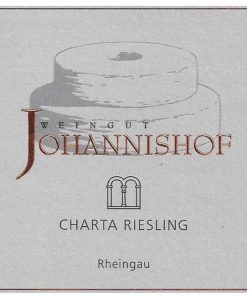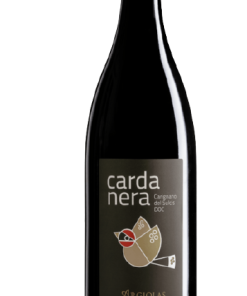-
×
 2020 Gini Soave Classico La Frosca
1 × $35.00
2020 Gini Soave Classico La Frosca
1 × $35.00 -
×
 2019 Rosa del Golfo Primitivo
1 × $21.00
2019 Rosa del Golfo Primitivo
1 × $21.00 -
×
 2019 Jean-Claude Bachelet Saint-Aubin 1er Cru Derriere La Tour Rouge
1 × $64.00
2019 Jean-Claude Bachelet Saint-Aubin 1er Cru Derriere La Tour Rouge
1 × $64.00 -
×
 2012 Worthy Sophia's Cuvee
1 × $62.00
2012 Worthy Sophia's Cuvee
1 × $62.00 -
×
 2019 Fontanabianca Barbaresco DOCG
1 × $50.00
2019 Fontanabianca Barbaresco DOCG
1 × $50.00 -
×
 2021 Weingut Johannishof Rheingau Riesling Charta 750ML
1 × $28.99
2021 Weingut Johannishof Rheingau Riesling Charta 750ML
1 × $28.99 -
×
 2022 Bodegas del Palacio de Fefinanes 1583 Albarino de Fefinanes 750ML
1 × $37.99
2022 Bodegas del Palacio de Fefinanes 1583 Albarino de Fefinanes 750ML
1 × $37.99 -
×
 2021 Argiolas Cardanera 750ML
1 × $21.99
2021 Argiolas Cardanera 750ML
1 × $21.99
2016 Il Poggione Brunello Riserva Vigna Paganelli
$134.99
98pts Galloni; 96pts Parker’s WA
Out of stock
2016 Il Poggione Brunello Riserva Vigna Paganelli
2016 Il Poggione Brunello Riserva Vigna Paganelli A beguiling mix of camphor and minty herbs, along with crushed stone, blows off slowly to reveal dark depths of black raspberry, licorice, autumnal spice and worn leather as the 2016 Brunello di Montalcino Riserva Vigna Paganelli unfolds in the glass. Its textures are unexpectedly soft and velvety-smooth, coupled with depths of intense red fruits that make an appearance just before a mix of brisk acids and tannins creates a more tactile and youthfully clenching expression toward the finale. This leaves the palate aching under the 2016’s structural heft, yet with plenty of primary concentration to balance, as wild savory herbs and earthy mineral tones linger for up to a minute. The potential here is off the charts, but readers will need to be very patient. The Riserva Vigna Paganelli is a cru selection of old vines that refines for 48 months in large French oak barrels of 33–52 hectoliters.”
Il Poggione
The story of Tenuta Il Poggione – the estate as we know it today – began at the end of the 19th century. It tells of Lavinio Franceschi, a landowner from Scandicci, on the hills that rise above Florence. Franceschi was so fascinated by the tales told by a shepherd moving his sheep to their summer pasture on the slopes of the Maremma between Montalcino and Sant’Angelo that he went to survey the place, caring nothing for the distance and dangers that commonly beset travellers in those days. He found his visit so interesting and the scenery so majestic that he decided to buy land there.
At the end of the 1800s, the Franceschi family’s name was put on the local roll of honour, along with that of the Tolomei and the Counts of Ciaia. Franceschi’s greatest achievement was to recognize the area’s potential for vine cultivation and winemaking and to see the possibilities of the Sangiovese grapes that had always been grown in the area. His management, modern business approach and enterprise marked the end of what until then had still been almost mediaeval agricultural methods. New Sangiovese clones were selected, better adapted to producing good quality grapes, and new vineyards were planted in the most suitable terroirs, with a view to producing high-class wines. The company also built a new winery, complete with the most up-to-date technology available at the time, but without losing sight of tradition or the characteristics of the local product.
After more than a century, Lavinio Franceschi’s work is still a fundamental point of reference for his successors, Leopoldo and Livia, who continue to develop the business with that same dedication and unflagging passion, combining the ancient skills of winemaking crafts and tradition with the latest, most progressive techniques.
Related products
$59.99
Red Wine from Tuscany, Italy
 2021 Weingut Johannishof Rheingau Riesling Charta 750ML
2021 Weingut Johannishof Rheingau Riesling Charta 750ML  2022 Bodegas del Palacio de Fefinanes 1583 Albarino de Fefinanes 750ML
2022 Bodegas del Palacio de Fefinanes 1583 Albarino de Fefinanes 750ML  2021 Argiolas Cardanera 750ML
2021 Argiolas Cardanera 750ML 



